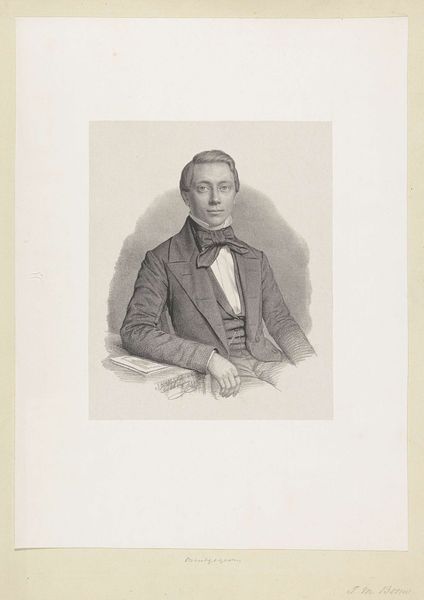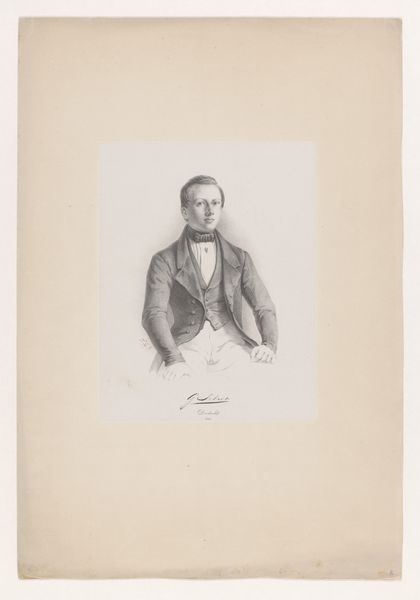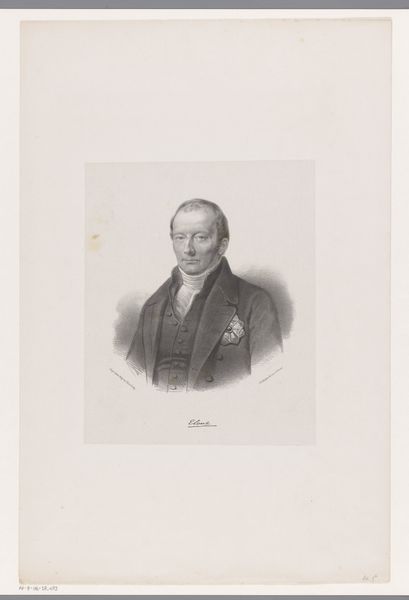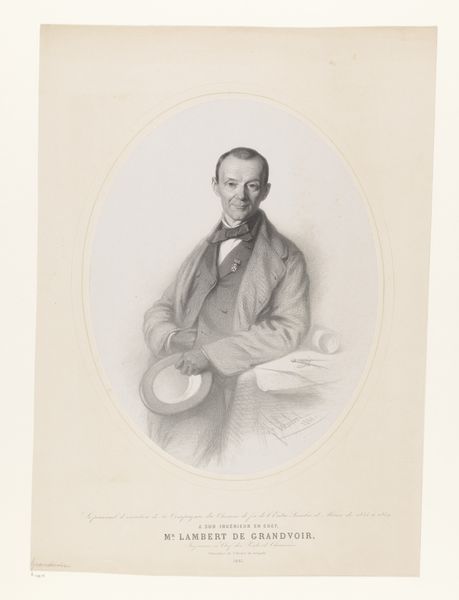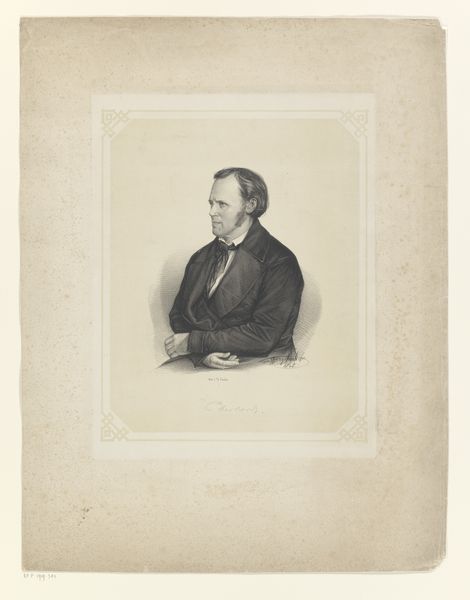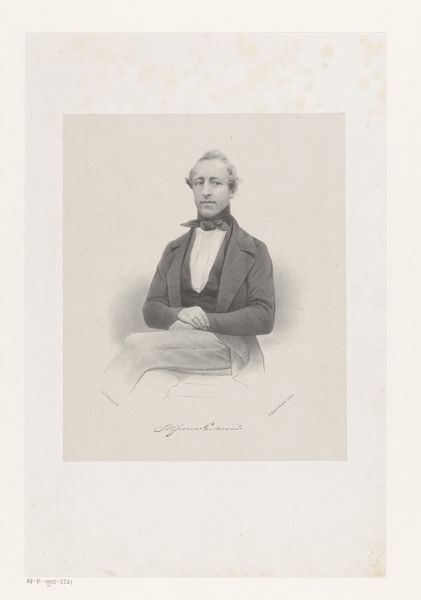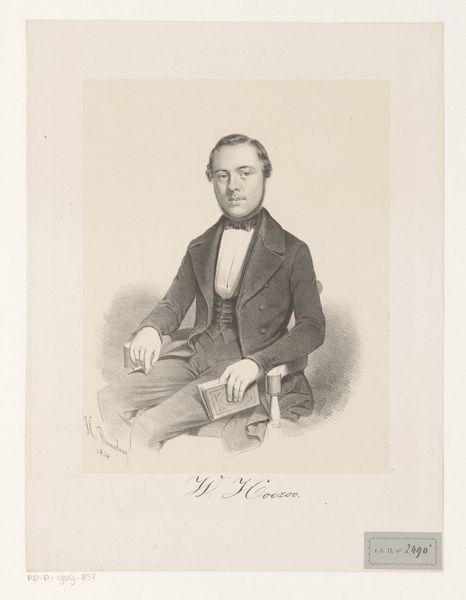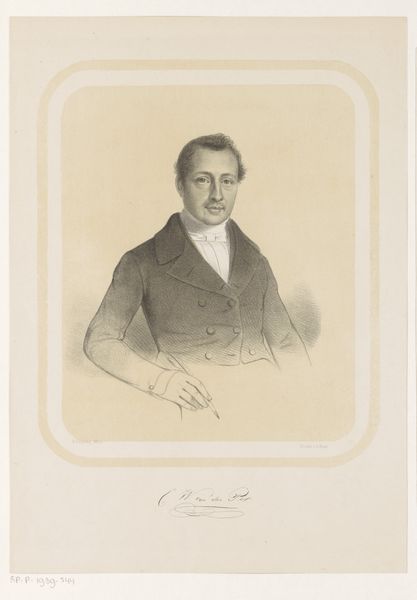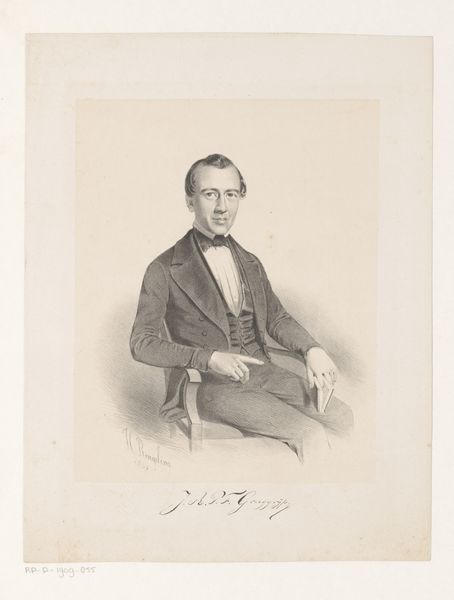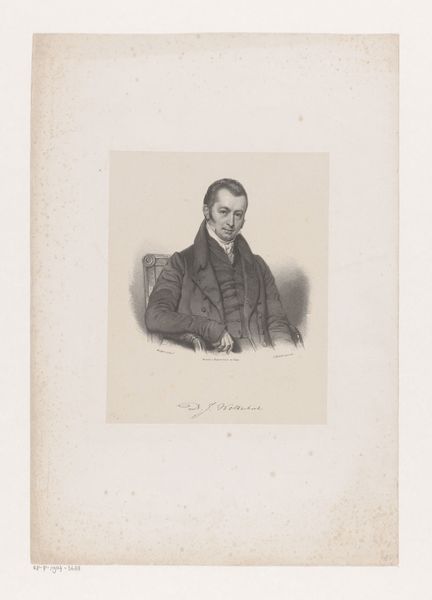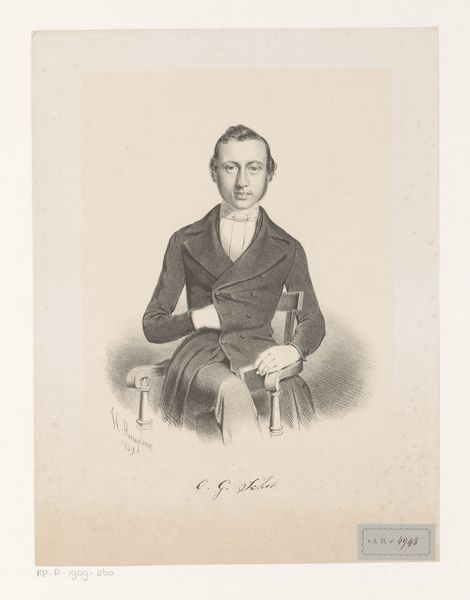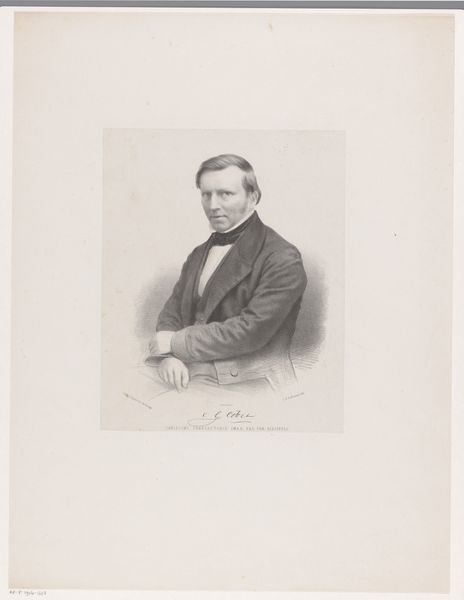
drawing, graphite
#
portrait
#
drawing
#
16_19th-century
#
archive photography
#
historical photography
#
graphite
#
realism
Dimensions: height 288 mm, width 212 mm, height 334 mm, width 253 mm
Copyright: Rijks Museum: Open Domain
Curator: Welcome. We’re looking at a portrait drawing of N. Graafland, completed in 1849 by Hendrik Ringeling. The piece is done with graphite. Editor: It has such an evenness to it—a balanced composure, but a muted intensity. The gradations in tone across his face, contrasted with the negative space… there’s a carefully constructed formalism here. Curator: Indeed. Note the accoutrements of 19th-century bourgeois life. He's seated in an upholstered chair, wearing a fine suit. He also clasps what looks like a book. In his day, Graafland surely signified erudition, status, respectability. Editor: The book, without a doubt, is key to understanding this symbolic representation of knowledge and perhaps even social identity. The way the hand embraces it...it speaks volumes. What do we know about the cultural implications of literacy in that period? Curator: The rise of the middle class certainly coincides with a greater valuing of literacy and access to printed materials, like this volume. One wonders about its specific symbolic function though. Religious text? Legal document? Editor: It lends itself to interpretation. Perhaps it speaks to civic duty, or religious piety. Even now, the book as signifier resonates with the concept of acquired knowledge. Consider, too, the austere tailoring of the suit... suggesting someone who wants to be perceived with certain level seriousness, of purpose perhaps. Curator: It's this confluence of signifiers that builds a psychological profile of Graafland through visual cues. The drawing creates a cultural and aspirational narrative. Editor: I would agree. And I come away intrigued about the structure inherent in its construction. This portrait reveals Ringeling’s mastery of both capturing likeness and signifying certain aspirations that went beyond simply reflecting likeness. Curator: And that interplay is precisely why works like this engage us today, speaking across centuries.
Comments
No comments
Be the first to comment and join the conversation on the ultimate creative platform.
